#1750s waistcoat
Text

I finished my silk handsewn 1750s waistcoat from the LACMA pattern project!
I'm incredibly pleased with how it turned out, I really think it does the mermen and dragon silk justice
#I'm wearing my flattening stays in this picture to aid the smooth look#but it fits lovely without flattening too#the pockets are real and ereader sized#the buttonholes were the worst#i had to learn couture techniques to stop the worst fraying#but it's worth it because lookit#a talia original#talia's adventures in dressmaking#excerpts from my life#sewing progress#1750s waistcoat#lacma pattern project#historical costuming#almost my face#silk mermen waistcoat#image id in alt text
188 notes
·
View notes
Text



Cream Embroidered Taffeta Waistcoat, ca. 1750.
Musée des Arts Décoratifs Paris.
#1750s#1750#1750s menswear#1750s waistcoat#embroidery#taffeta#mad Paris#menswear#waistcoat#silk#extant garments#musée des arts décoratifs paris#1750s extant garment
27 notes
·
View notes
Photo



Banyan and waistcoat, 1750′s
From the V&A
641 notes
·
View notes
Photo



1755-1765 Suit (British)
wool, silk
(Metropolitan Museum of Art)
393 notes
·
View notes
Photo

Thaddeus Burr
John Singleton Copley (American; 1738–1815)
1758–60
Oil on canvas
Saint Louis Art Museum, St. Louis, Missouri
#18th-century art#18th-century American art#18th-century American artists#18th-century portraits#American art#American artists#American paintings#American painters#portrait paintings#American portraitists#American portraits#John Singleton Copley#Copley#satin#18th century#1750s#1760s#18th-century costume#waistcoats#18th-century American portraits#portraits#18th-century style#Thaddeus Burr#pedestals#Colonia America#gods and goddesses#Demeter#cornucopias#sculptures#relief sculptures
51 notes
·
View notes
Text

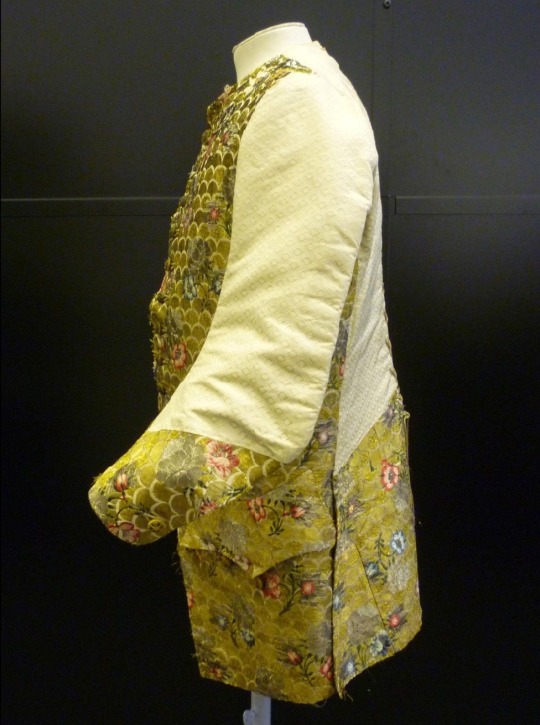

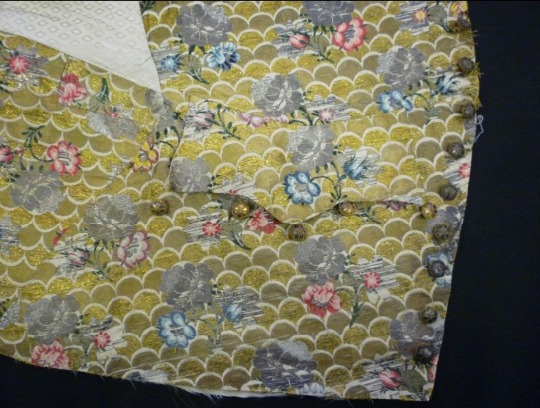
Man's sleeved waistcoat of ivory silk, 1755c, Spitalfields, English; brocaded with silk and metal thread
#18th century#18th century fashion#spitalfields silk#fashion history#historical fashion#silk#1750s fashion#menswear#men's fashion#waistcoat
39 notes
·
View notes
Photo

Waistcoat, 1755.
47 notes
·
View notes
Text

Title: Waistcoat
Date: 1750–70
Culture: probably Spanish
Medium: Silk, metallic
2 notes
·
View notes
Text

Suit
Fabric c.1725-1750
This man’s suit, comprising a coat, waistcoat and breeches, was acquired in Paris. It appears to have been made from an embroidered furnishing fabric, possibly a bed hanging, dating to the second quarter of the 18th Century, that has been turned into a theatrical or fancy dress outfit approximating the mid 18th Century in style. The bright yellow satin has been intricately pieced together, particularly on the waistcoat that, of the three garments, is the least authentic in cut. The sprays of large flowers tied together with ribbon bows, embroidered in couched chenille thread, have either been cut from the original fabric and stitched down or left in situ on the satin. A scattering of metal spangles is most dense on the front of the waistcoat, and the 18th Century metallic lace borders incorporate both very narrow strips of silver thread and metal thread wrapped around a silk core.
John Bright Collection
#suit#fashion history#historical fashion#1720s#1730s#1740s#yellow#embroidery#floral#satin#france#18th century#john bright collection
186 notes
·
View notes
Text
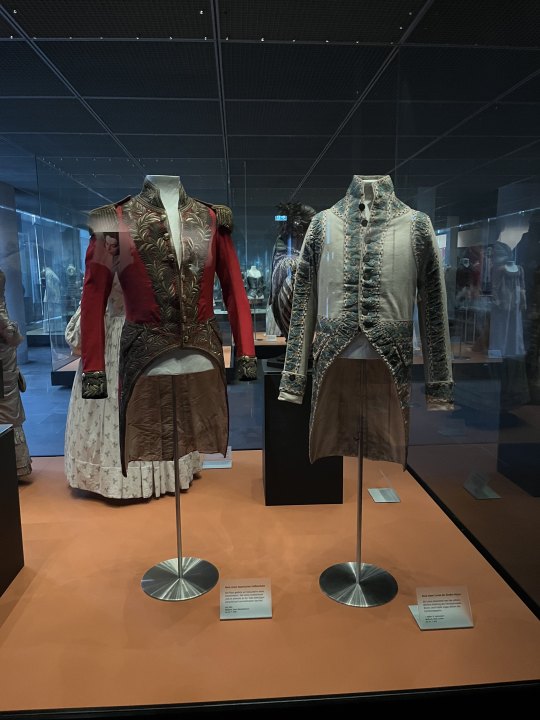
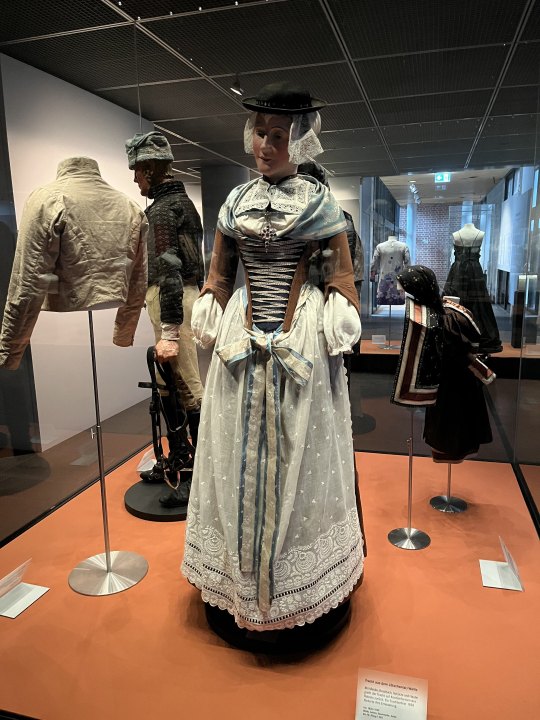

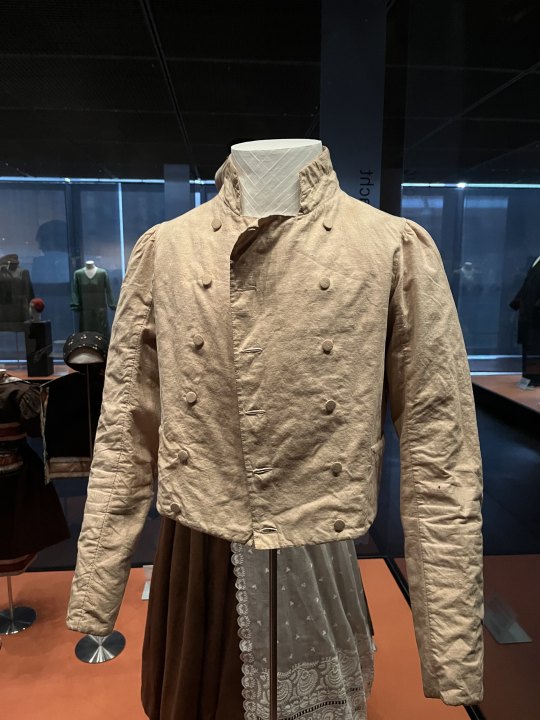
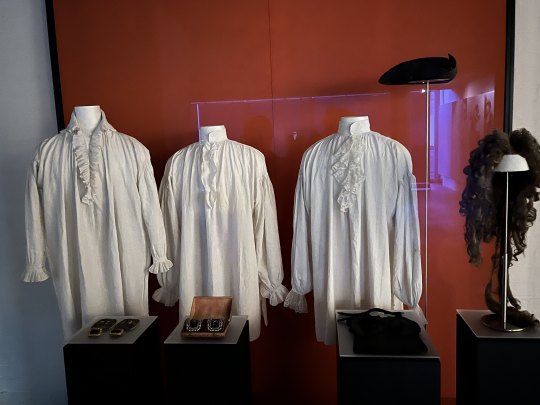



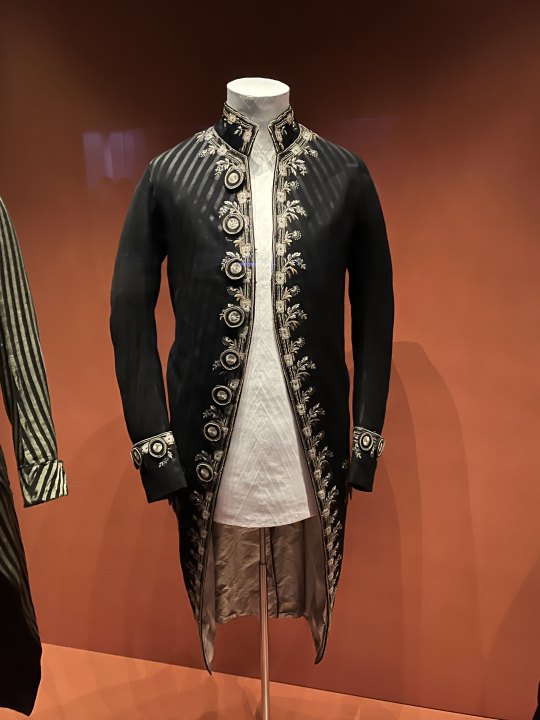

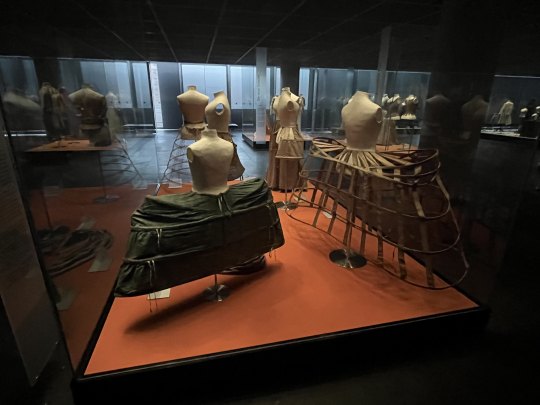
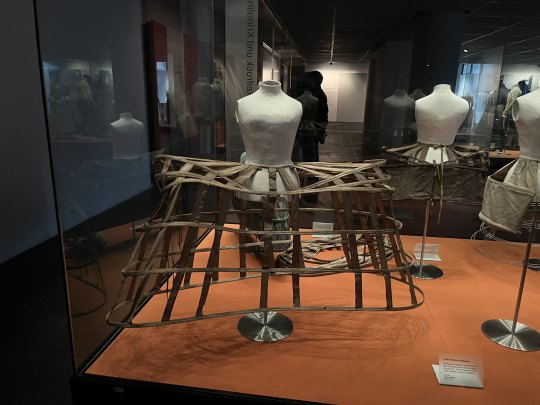
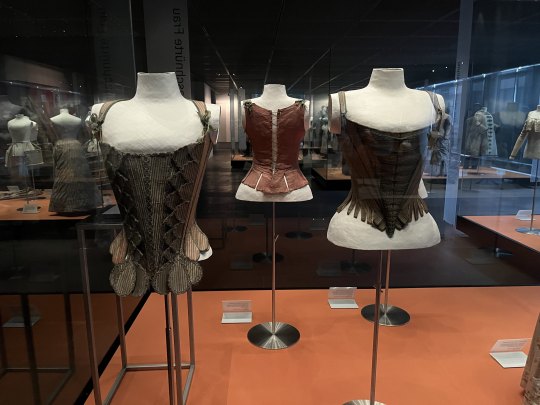

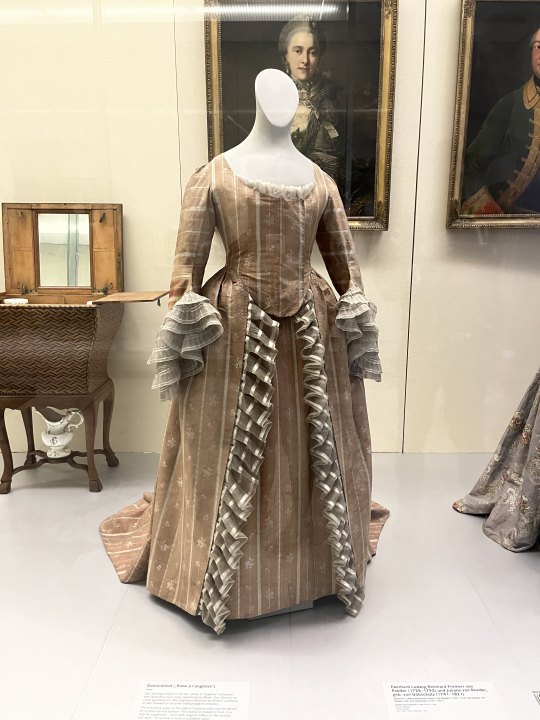
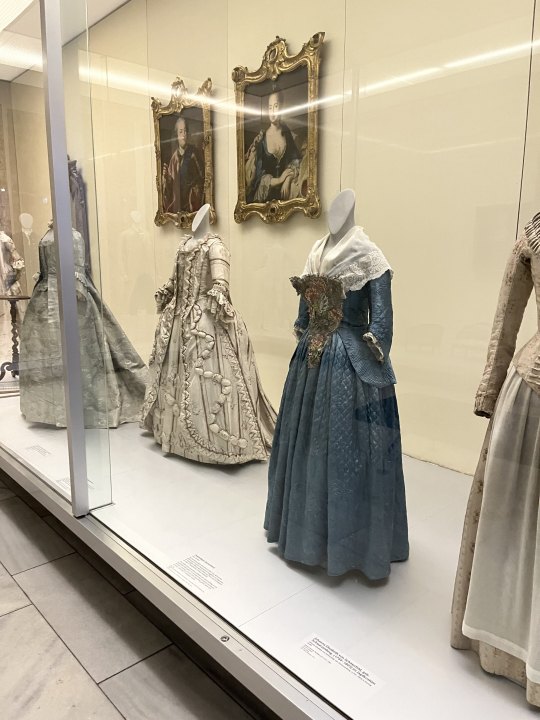
And here, as promised to the dear @vinceaddams come a lot of extant Garments from my recent Visit at the German National Museum in Nuremberg. I am trying to give as much Information about each Picture as I can though unfortunately not all of the Pictures were taken by me and I could take Pictures as extensively (including Info Signs) as I would have wanted, lest I be abandoned in the Clothing Section. Also the whole Section was awfully dim, which made it rather difficult to read some of the Signs. The last three Pictures were taken in a different Section, thus the more pleasant Lighting.
Servant Livery, bavarian Court, mid 19th Century (left); Servant of the Count of Cannotreadhisname, first half 19th Century (right)
Woman's Folkdress, Lötschental/Wallis (Switzerland), Museum dates it 1830/1905 which is an awfully broad Range, but maybe it was altered later; shows wonderfully how late 18th Century Styles were preserved in european Folkdress that came to be in the 19th Century proper
Various Men's Garments throughout the 18th Century, as there are Closeups of each, the respective Detailinformation will be provided further down.
Men's Spencer, c. 1810s-1820s, Linen and Cotton, the Sign didn't say it explicitely but due to it's Placement in the Exhibition and comparable other Pieces I have seen, I think this is more of a common Man's Piece of Clothing.
Three Men's Shirts, various Shoebuckles, a cocked Hat, a Periwig and what I assume to be a Hair Bag. This Display Case had a rather badly illuminated Sign, so sadly I have no further Details about the Pieces.
Justeaucorps, c. 1695, Wool, Silk, Metal Trim.
Waistcoat, c. 1695, Silk, according to the Museum it was worn together with the Justeaucorps, which seems to be a nice Colour-Combination.
Breeches, 1790-1800, Silk. Very pretty Pair, but the bad Lighting doesn't really let it show.
Habit à la francaise, c. 1790, Wool, Silk, Embroidery (What a Material Specification...). I really like the Combination of those subtle dark on dark Stripes and the Embroidery.
Tailcoat, c. 1790/1795, Cotton, Silk, Linen, really peak 1790s Look honestly.
Very wide Court Panniers, with Pocket Hoops and Crinoline in the Background. Alas no Detail Information for this and the next two Pictures.
Frontal View of the Pannier. I suppose I have to get one of those at some Point, if only for how extra they are.
Three Pairs of Stays, two from the Front, one from the Back. Sadly I don't feel confident enough to Date those and I have no Pictures showing the Info Signs well enough.
Lots of pretty Dresses that were exhibited in another Section of the Museum. The right one is a Robe à l'Anglaise, but that's all I can tell.
Another beautiful Anglaise, notable for being preserved in its Entirety with original Ruffles.
More pretty Dresses. Unfortunately due to Time Reasons I have no Pictures of the Suits displayed across the Dresses in the U-shaped Display, though I have to say one of them had a very much not authentic Lacebib hanging from the Neck...
That's all the cool Clothing Pics I have, at some Point I will return and take loooots more Pictures from all the Angles too. Also at some Point I might write to the Museum about the Lighting, there surely is a better Solution when having your Objects barely visible with unreadable Signs while still protecting them from UV-Rays.
Bonus-Pic 1:

Me, in historical Dress, c. 1750 (minus the Shoes), standing in a historical Kitchen.
Bonus-Pic 2, for the Boat-Crowd:
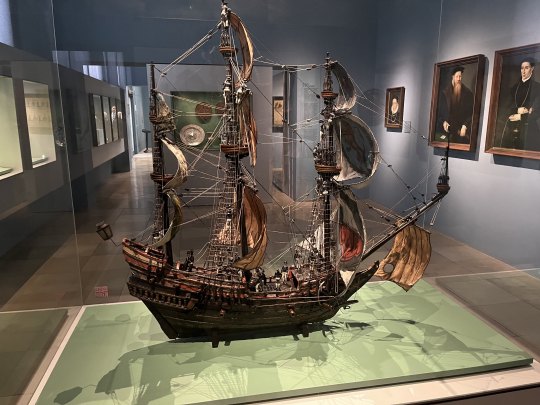
Beautifully detailed Modell Sailing Ship, early to mid 17th Century if I remember correctly. Interestingly enough all the little Sailor Figurines on it were very much early 19th Century in Style, so I assume the previous owner had those added at some Point, before the Museum acquired the Model in the late 19th Century. (The Incongruence sadly wasn't addressed on the Info Sign, so I might contact them about this too.)
#Aus dem Leben einer Taugenichts#Extant Garments#Historical Fashion#Germanisches National Museum#18th Century#19th Century#Museum
160 notes
·
View notes
Text


Today I am playing around with the 1750s waistcoat pattern from the LACMA pattern project. The measurements are of the extant garment and scaled, but I enlarged it to be roughly my size with my pocket projector. It's looking good, I only need to shorten it and make the back panel smaller
#a talia original#talia's adventures in dressmaking#excerpts from my life#sewing progress#1750s waistcoat#lacma pattern project
63 notes
·
View notes
Text

White Embroidered Linen Waistcoat, 1730-1760, Possibly English.
National Museums Scotland.
#waistcoat#womenswear#extant garments#18th century#linen#1730#1730s#1740s#1750s#1730s waistcoat#1740s waistcoat#1750s waistcoat#1730s England#1740s England#1750s England#England#English#British#Britain#national museums scotland#embroidery#1730s extant garment#1740s extant garment#1750s extant garment
21 notes
·
View notes
Photo


Waistcoat worn by Edward Curtis in his portrait by Marco Benefial, 1750
From the V&A
381 notes
·
View notes
Text

ab. 1745-1750 Joseph Highmore - Man in a White Silk Waistcoat
(Huntington Library, Art Museum, and Botanical Gardens)
47 notes
·
View notes
Note
Do you think you can draw a historically accurate version of belle’s other dresses in beauty and the beast?
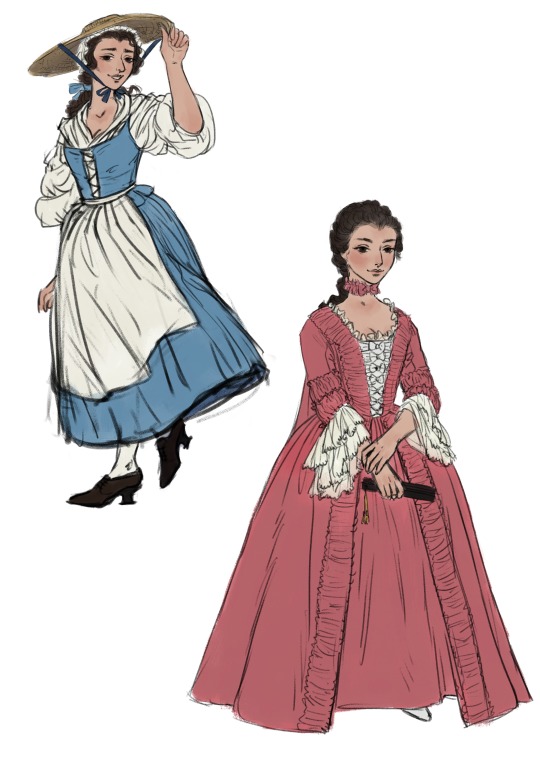

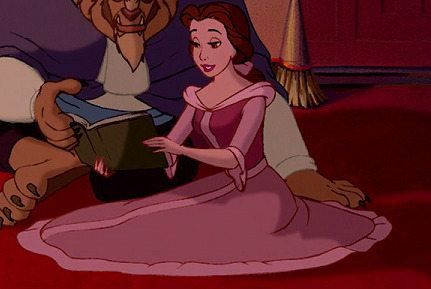
(While I was searching for the pictures of the original designs for this post I realised I had forgotten the existence of the green dress, which I think she wears at the end of the film?)
I do love making these historical versions so I did do couple of sketches.
I made them based on around 1750s fashion, like the first Belle I made. I do have to admit that the blue dress is not exactly super historically accurate. I gave her jumps, usually a sort of waistcoat that's laced (usually unboned or very lightly boned) and works as a replacement of stays. Usually when they are depicted in art from the time, they are used by working women while they are doing physical labour. Which makes sense, you don't have extra sleeves that might be too warm or hinder arm movement and they are softer than stays so they don't also hinder torso movement but are still somewhat supportive. But upper class women did wear them too as a part of negligee but not really at all in social situations. Then they were usually also quilted. I think it's pretty safe to say Belle is not working class. I think her father could be classified as craftsman and being from that class does make sense to their social status. That would make them under the merchant class and basically roughly lower middle class in 18th century French standards. They do live in rural village though, and jumps seem to be more depicted on rural settings and on peasants too. They are very informal, but it also seems like rural social settings just tended to be more informal. So I think that could lend a little more plausibility.
If I would have taken a safer route I'd given her a jacket/caraco or a round gown/robe a l'anglaise, which were commonly used by middle and lower classes and also upper classes for casual wear. People at the time generally didn't go outside without covering their head. Most women wore caps at least during the day to keep their hair cleaner. In fancier evening occasions (mostly only upper classes and upper middle classes would attend those) they would not cover their hair. Also hats were popular and I've seen several of these very wide brimmed hats, usually made of straw, on artisan and peasant French women.
For her pink gown robe a l'anglaise would have worked too, as it was clearly semi casual, not negligee, but also not the ball gown. But being a castle of a prince and it being used for a dinner scene, robe a la francaise works better, as at the time they were used for salons and other fashionable but not very official gatherings (not outings though) by the nobility. I could have also given it the kerchief, it would have fitted better the look of the original design's neckline made it a little less formal, but maybe we can imagine this is how she wore it to the dinner and she'd had worn it with a kerchief during the day or something.
#not me overthinking historical clothing of some silly little sketches#art#fashion history#fanart#answers#anon#beauty and the beast#historically accurate belle#historically accurate disney princesses#disney fanart#disney#18th century fashion#historical fashion#my art
325 notes
·
View notes
Note
Top five extant waistcoats 👀👀
How dare you make me choose, agh!
I have exactly 1302 images on my 18th century waistcoats pinterest board right now, so here are 5 that I especially love, but picking a definitive top 5 is impossible.
(I already have a long post with 20 of my favourites, but I kept those confined to just the last 2 decades of the century.)
1. c. 1790's, Cooper Hewitt collection.

This one is super cool, because it's the only one I've ever seen with net overlay. Look at it! Teeny tiny baby 2mm silk ribbon, all hand knotted.

2. c. 1750's, V&A.

This one is printed to shape! Someone made a big engraved plate with this design that's specifically made to fit the front of a waistcoat! It's a bit off looking around the edges, so I think maybe the customer was a bit smaller than the pre-printed fabric shape, but it's still so cool.

There are more examples of this technique, and I have a pinterest board section for them.
3. This one. Wool thread on linen, sold by Christie's. Ugh, I want one!! Wouldn't this look amazing with my dark green wool 1730's coat and breeches?

I would love to do a crewel embroidered waistcoat like this someday. This grainy picture is the only one I've been able to find of this one, and I once tried emailing Christie's to see if there were more pictures, but they have a lot of employees and didn't seem to understand what I wanted, and the listing was from 2009, so I was not successful.
I hate it when auction sites take down the pictures after the sale!! >:( Nowadays when I pin pictures from auction listings I always make sure to back them up on the wayback machine. There are so many old ones that I wish I'd done that for...
Crewel waistcoats are pretty rare, so there aren't many closeups out there, but these 1734 pocket flap samples are a great example of something similar. (got a subsection for crewel on my embroidery pinboard)

4. c. 1735-45, Historic Deerfield. There are tons of woven to shape waistcoats out there, but this is one of my favourites. I love huge flowers, I love sleeved waistcoats, and I love green.

It looks amazing at nearly 300 years old, so just imagine it when all those silver threads were new and not tarnished!
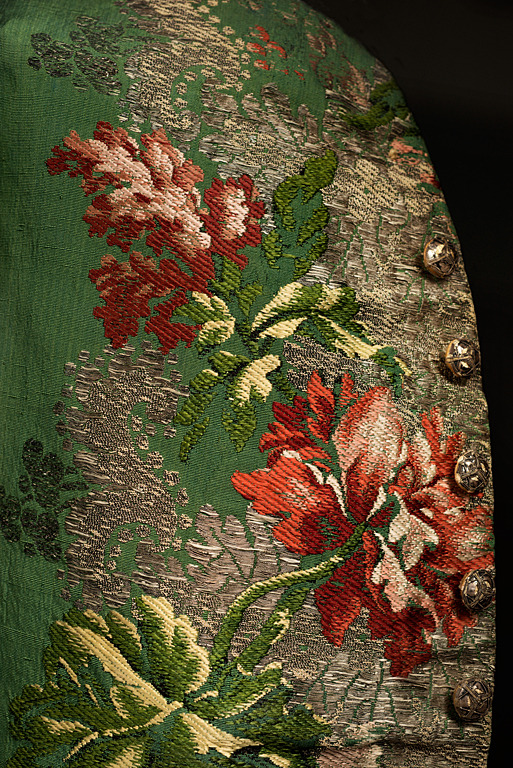
Similar to the blue printed one, this would have been woven with the brocade flowers in the shape of the front of a waistcoat, and then sold to a customer who'd then bring it to a tailor to have it made up to fit him. One of those things that was easy to find in the 18th century, but is completely unattainable to modern costumers, alas.
5. c. 1795-1800, The Met.

Heeheehoohoo. bugs.
There are a lot of late 18th century waistcoats with weird little pictures embroidered on them, and I can't choose a favourite, but bugs is way up there on the list. This isn't even the only bug embroidered one, there are others!
This one has been altered. I'd say it was probably originally made in the 1780's, and then cut down to be shorter and given a different collar shape sometime in the early 19th century. Lots of waistcoats were altered like this, and with the embroidered ones it's really obvious. I would have liked this one better in its original state, but oh well.
So! Those are not the very best 5, but they're 5 very good ones!
137 notes
·
View notes